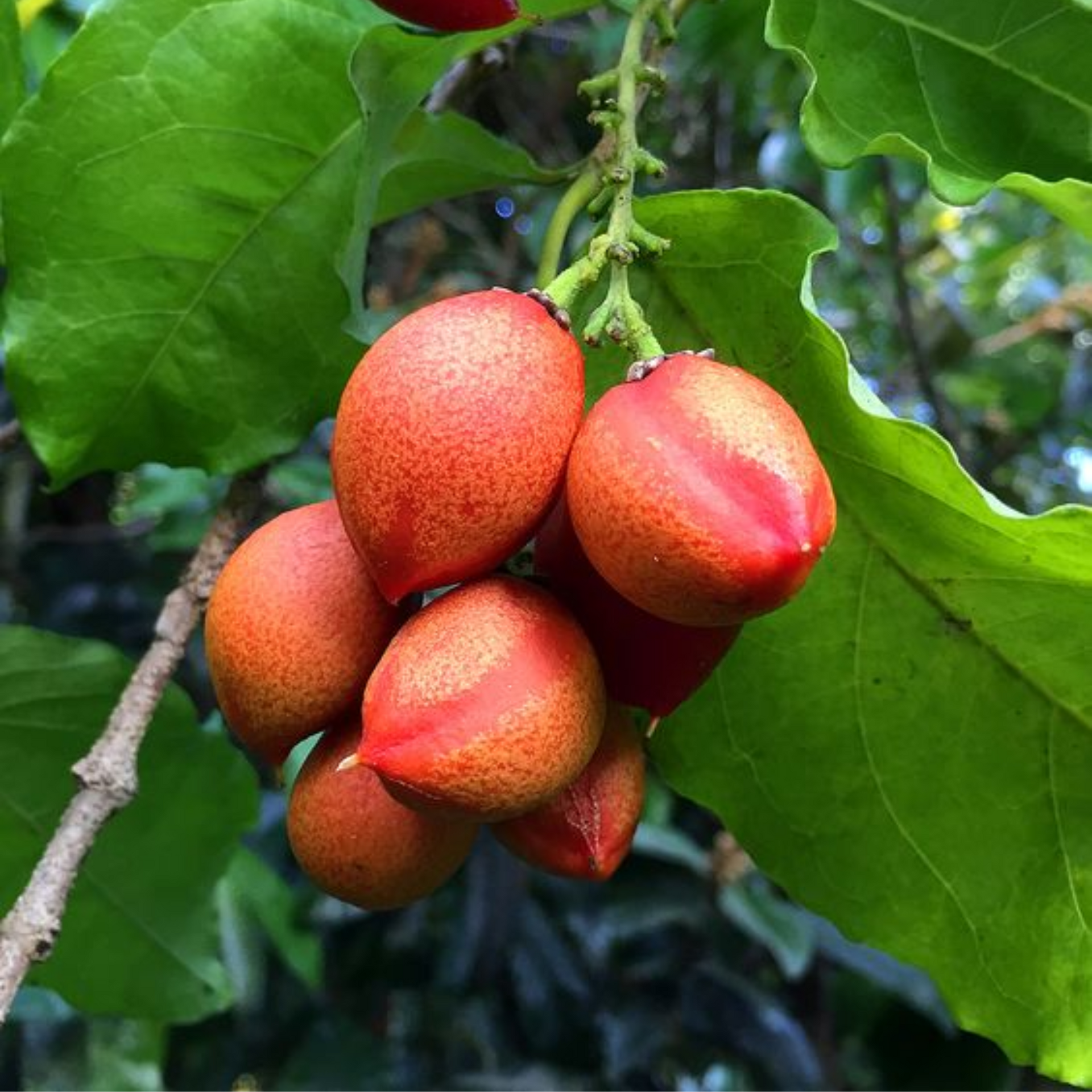
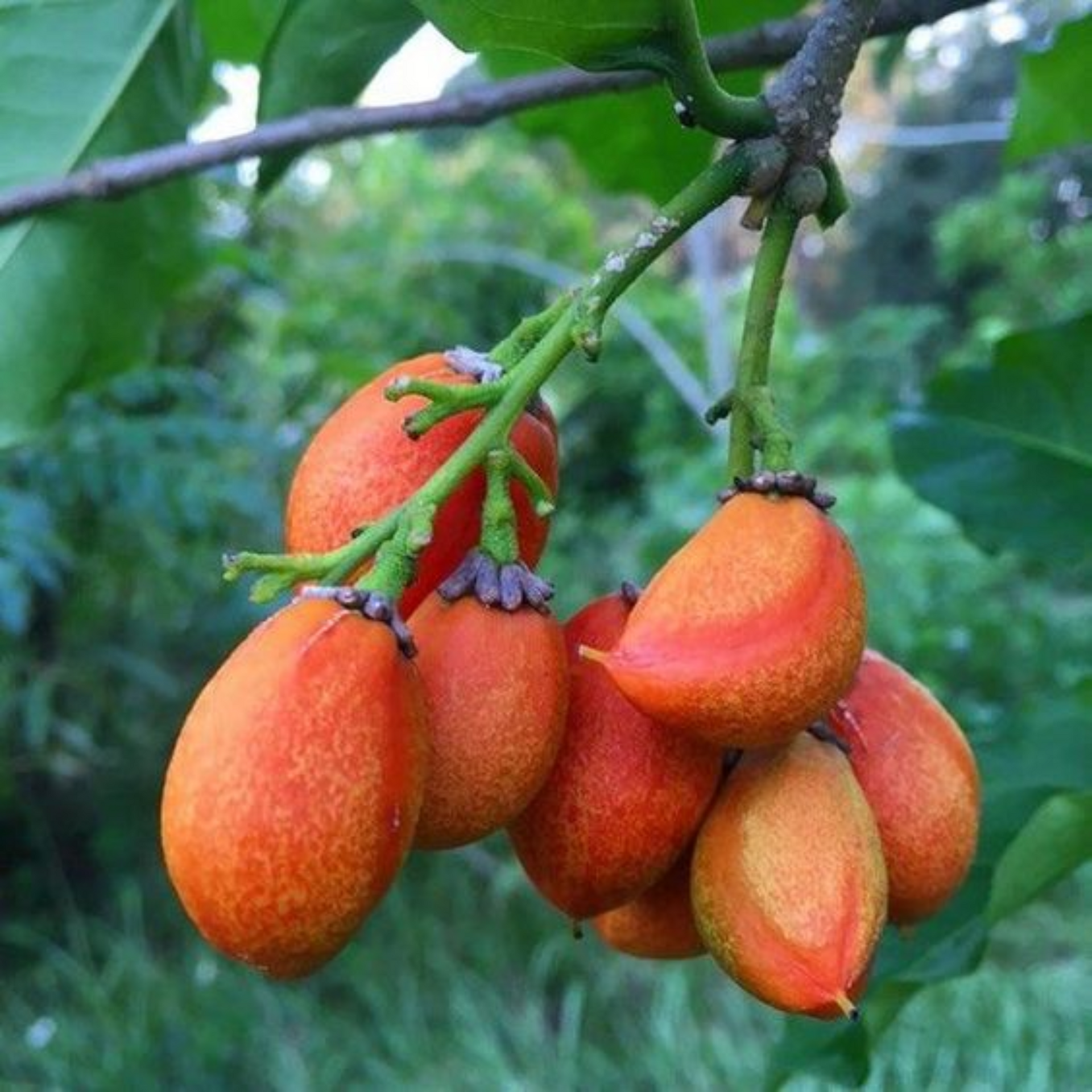
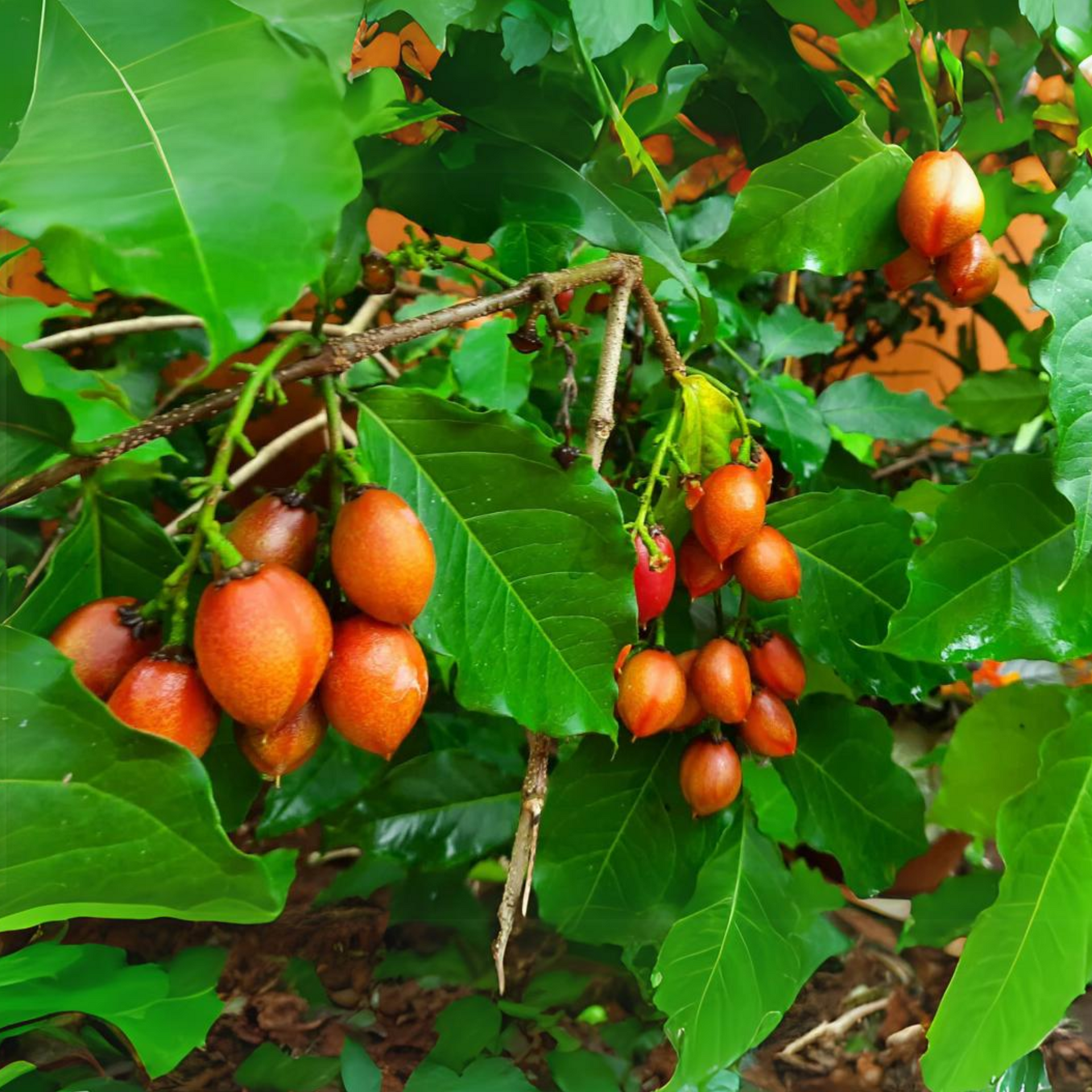
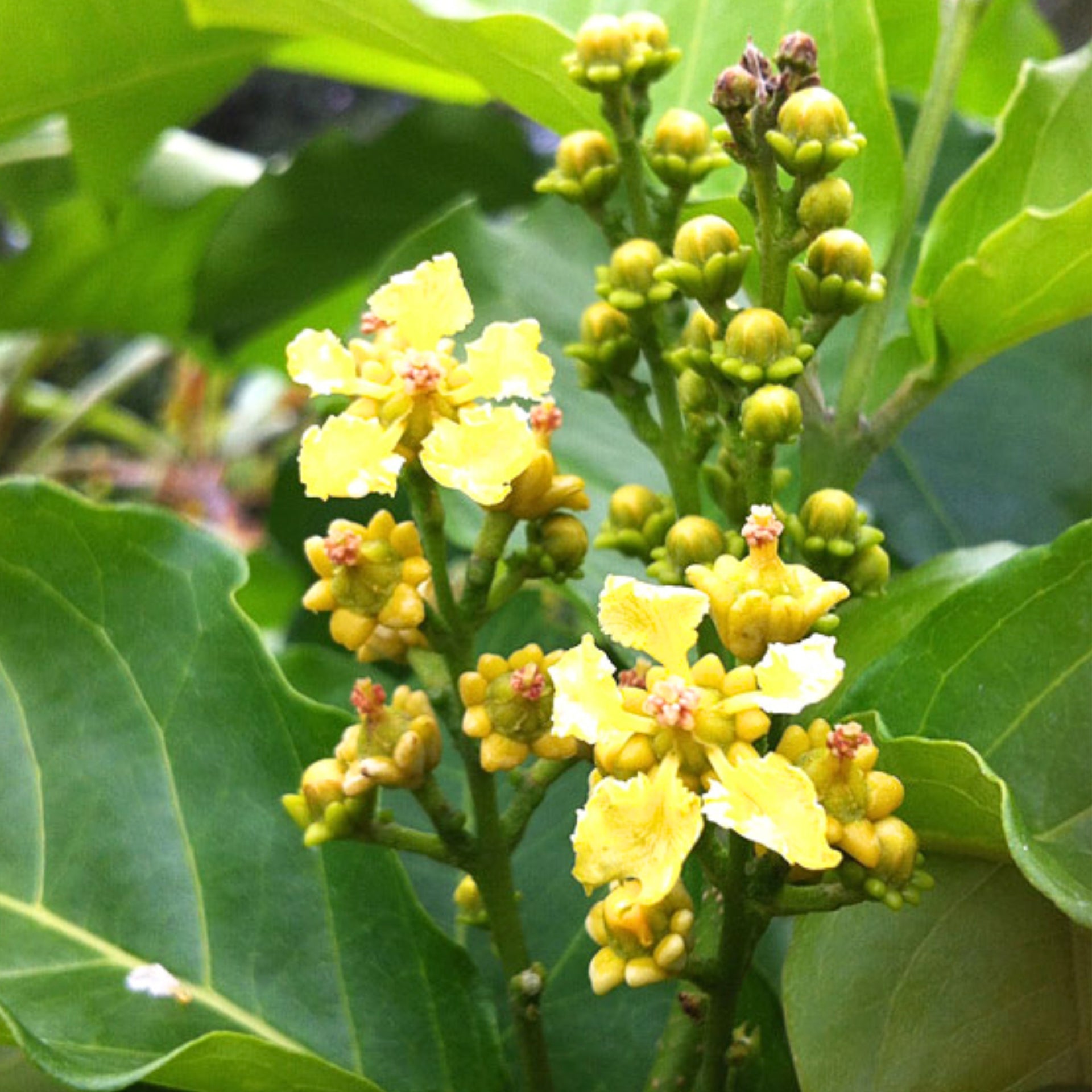
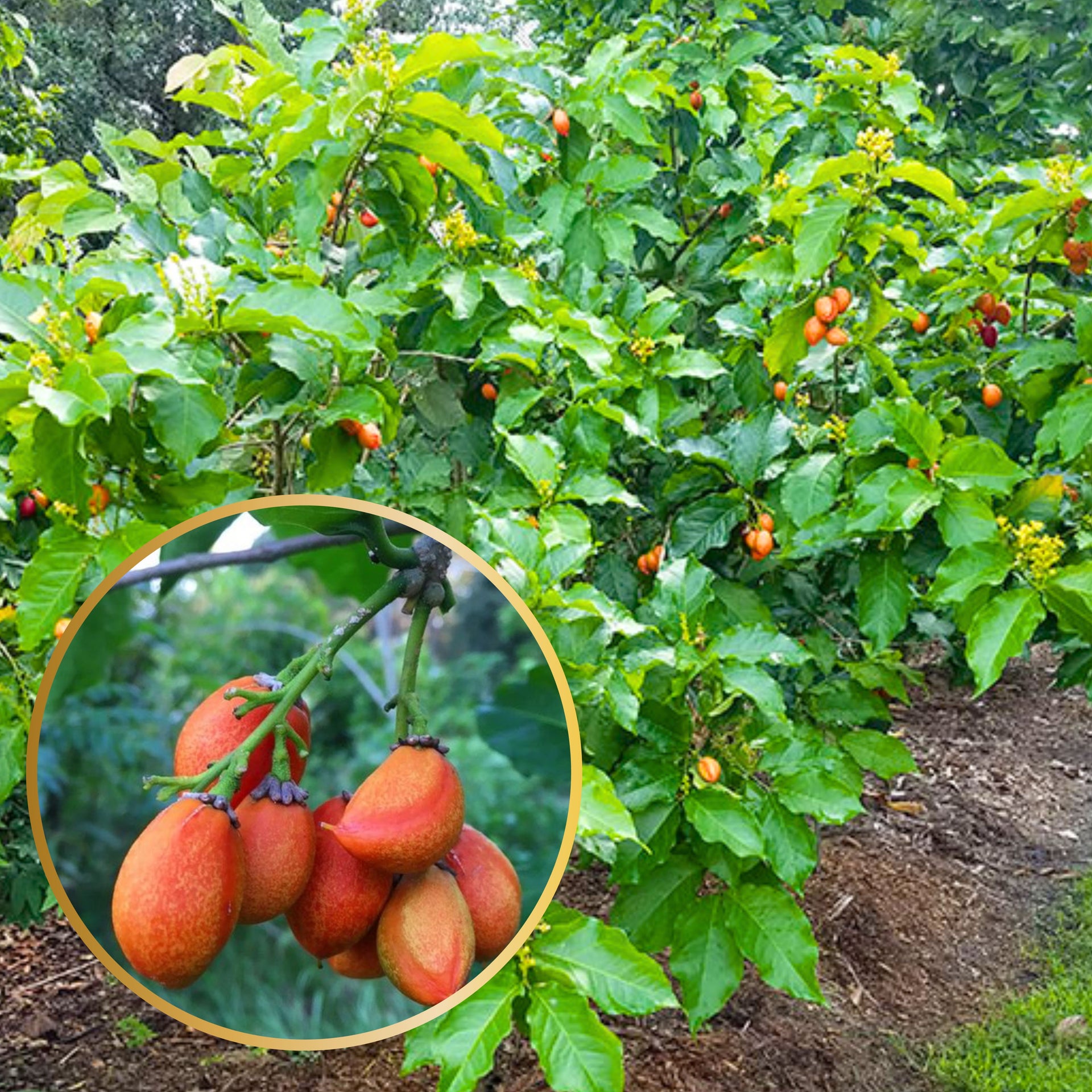

Green Paradise Peanut Butter Fruit Plant Bunchosia argentea Live Plant
Guaranteed Safe Checkout
Unveiling the Exotic Peanut Butter Fruit
Plant: Nature's Creamy Delight
When it comes to fruits, most of us are familiar with the classics: apples, bananas, and oranges. But the world of fruits is a diverse and fascinating one, filled with hidden treasures waiting to be discovered. One such gem is the peanut butter fruit, a tropical delight that not only tantalizes your taste buds but also leaves you in awe of nature's wonders.
About the Peanut Butter Fruit Plant
- Scientifically known as Bunchosia argentea, the peanut butter fruit plant is a small to medium-sized tree native to South America, particularly found in countries like Brazil, Venezuela, and Colombia.
- It belongs to the Malpighiaceae family, which is known for its aromatic and often unique-tasting fruits.
- The name "peanut butter fruit" might pique your curiosity, and rightly so.
- The fruit earned this intriguing name due to the uncanny resemblance of its flesh to the beloved spread, peanut butter.
- The creamy texture and nutty flavor are so reminiscent of peanut butter that it's almost like nature's own version of the popular sandwich staple.
Aesthetic Appeal
- While the taste is undoubtedly a highlight, the peanut butter fruit plant also boasts aesthetic qualities that make it a prized addition to gardens and landscapes.
- The plant features glossy, dark green leaves that provide a lush backdrop to its clusters of small, yellow flowers.
- These flowers, in turn, give way to the main attraction – the peanut butter fruit.
- The fruit itself is small, typically about the size of a cherry or grape, and ranges in color from yellow to orange when ripe.
- It dangles from the tree in clusters, making for a picturesque sight.
- As it ripens, the fruit softens, and the skin becomes translucent, revealing the creamy, peanut butter-like interior.
Flavorful and Versatile
- One bite into the peanut butter fruit, and you'll be greeted by a delightful combination of flavors.
- The taste is often described as a mix of peanuts, almonds, and cashews, with a hint of tropical fruitiness.
- It's sweet with a subtle nutty undertone, making it a unique and memorable treat for your taste buds.
- The versatility of this fruit extends beyond its deliciousness.
- While some prefer to savor it fresh, others get creative by using it in various culinary applications.
- It can be incorporated into smoothies, desserts, and even as a spread for bread or crackers, capitalizing on its peanut butter-like texture and flavor.
Health Benefits
- Besides being a delectable addition to your diet, the peanut butter fruit offers a range of health benefits.
- It's a good source of vitamins, particularly vitamin C, which is essential for a strong immune system.
- Additionally, it provides dietary fiber, which aids digestion, and antioxidants that combat harmful free radicals in the body.
Cultivation and Availability
- Growing your own peanut butter fruit plant can be a rewarding experience.
- These plants thrive in tropical and subtropical climates, preferring well-drained soil and full sun.
- They are relatively low-maintenance and can be grown in containers, making them suitable for both large gardens and small urban spaces.
- For those who don't have access to a peanut butter fruit plant in their region, some specialty stores and online markets offer the fruit or seeds, allowing enthusiasts to enjoy this exotic treat no matter where they are.
Cultivating Peanut Butter Fruit: A Guide to Growing
Your Own Nutty Delights
If you're a fan of unique and exotic fruits, you're in for a treat! The peanut butter fruit, scientifically known as Bunchosia argentea, is a tropical gem that's gaining popularity among fruit enthusiasts. This delightful fruit not only resembles the flavor of peanut butter but also offers a host of nutritional benefits. If you've ever wondered how to grow this fascinating plant in your garden or indoor space, this guide will walk you through the process step by step.
Getting to Know the Peanut Butter Fruit
Before we dive into the cultivation process, let's learn a bit more about this remarkable fruit.
Origin:
The peanut butter fruit is native to South America, particularly regions like Brazil, Argentina, and Uruguay.
Flavor:
As the name suggests, the fruit has a subtle peanut butter flavor mixed with a hint of tropical sweetness. It's often described as a blend of peanuts and honey.
Appearance:
The fruit is small and typically measures around 1 to 1.5 inches in length. It has a reddish-brown skin when ripe and a creamy yellow flesh inside.
Nutrition:
Peanut butter fruit is a good source of vitamin C, fiber, and various antioxidants. It's also low in calories, making it a healthy addition to your diet.
Growing Conditions
To successfully grow peanut butter fruit, you need to recreate its natural tropical habitat as closely as possible. Then are the crucial growing conditions to consider.
1. Climate
Peanut butter fruit thrives in warm, tropical climates. It's best suited for USDA hardiness zones 10-11. If you don't live in a tropical region, consider growing it in a greenhouse or as a potted plant that you can move indoors during colder months.
2. Sunlight
These plants love sunshine. give at least 6- 8 hours of direct sun daily for optimal growth.
3. Soil
Use well-draining soil with a slightly acidic to neutral pH level (around 6.0-7.0). Adding organic matter like compost can ameliorate soil quality.
4. Watering
Keep the soil consistently moist but not waterlogged. These plants prefer slightly humid conditions.
5. Container or Garden Bed
You can grow peanut butter fruit in a large container or directly in a garden bed. Container planting offers more flexibility, especially if you need to move the plant indoors during cold spells.
Planting and Care
Now that you have the right conditions in place, let's dive into the planting and care process:
1. Choosing a Plant
You can start from seeds, but it's often easier to purchase a young plant from a nursery or online supplier.
2. Planting
If you're using a container, make sure it has good drainage. Fill it with the prepared soil.
Dig a hole twice the size of the root ball of your Plant.
Place the plant in the hole, ensuring it's at the same depth as it was in its nursery pot.
Backfill the hole with earth, tamping it down gently.
Water thoroughly.
3. Pruning
Peanut butter fruit plants benefit from regular pruning to encourage bushy growth and remove dead or weak branches. pare in late downtime or early spring.
4. Fertilizing
Use a balanced, slow-release fertilizer during the growing season (spring to early fall). Follow the manufacturer's instructions for application.
5. Pest and Disease Management
Common pests such as aphids and mealybugs should be avoided. Neem oil painting or insecticidal cleaner can help control these issues. Additionally, maintain adequate air circulation around the plant to avoid fungal diseases.
6. Harvesting
Peanut butter fruits typically ripen in late summer to early fall. You'll know they're ready to harvest when the skin turns reddish-brown, and the fruit comes off the stem easily. Simply pluck them from the plant when they're ripe.
Enjoying Your Harvest
Once you've successfully grown peanut butter fruit, there are various ways to enjoy this unique delicacy:
Eating Fresh:
Eat them straight off the plant or add them to fruit salads for a delightful twist.
Making Jams and Jellies:
The fruit's natural sweetness and peanut butter undertones make for fantastic spreads.
Smoothies:
Blend them into your favorite fruit smoothie for a nutty twist.
Desserts:
Use peanut butter fruit as a topping for ice cream, yogurt, or pancakes.
- In conclusion, growing peanut butter fruit can be a rewarding experience for both novice and experienced gardeners.
- With the right conditions and care, you can savor the unique flavor of this tropical gem right from your own garden or indoor space.
- So, why not give it a try and add a touch of exotic delight to your gardening adventures?






